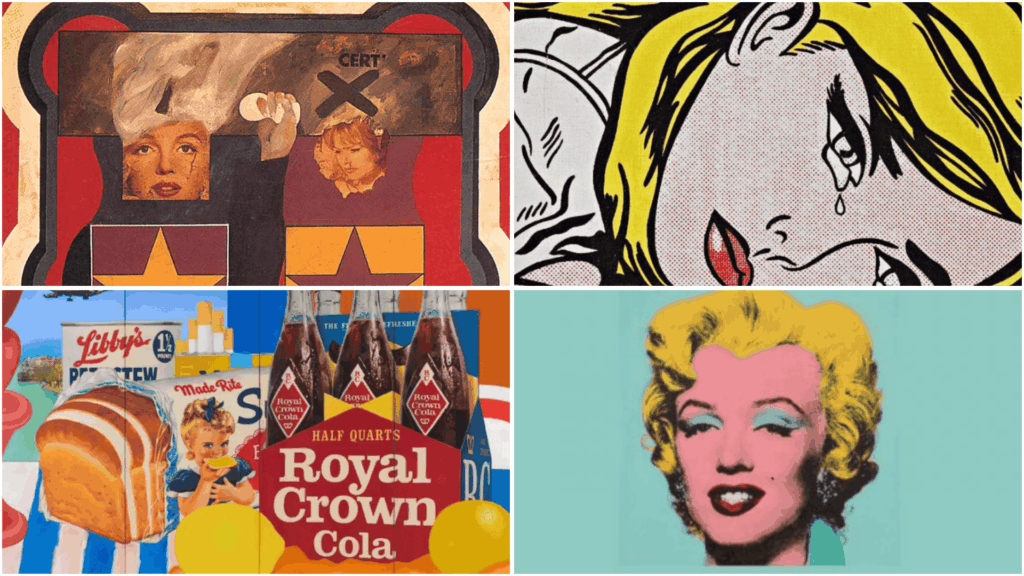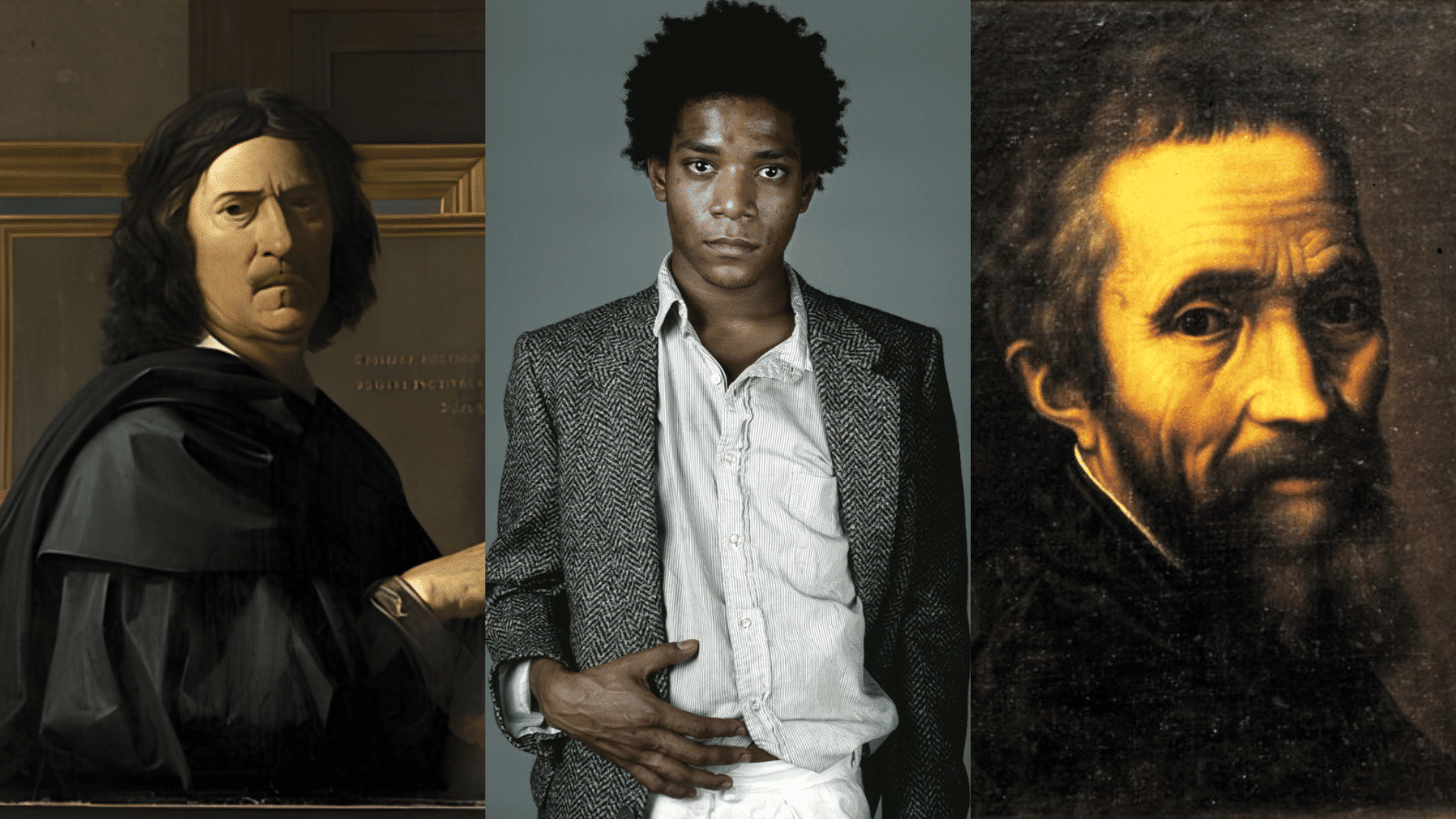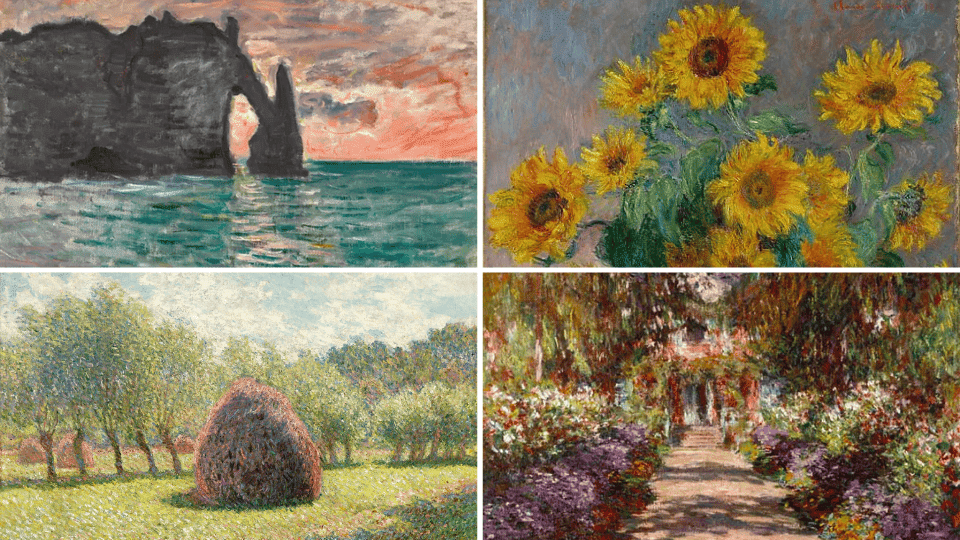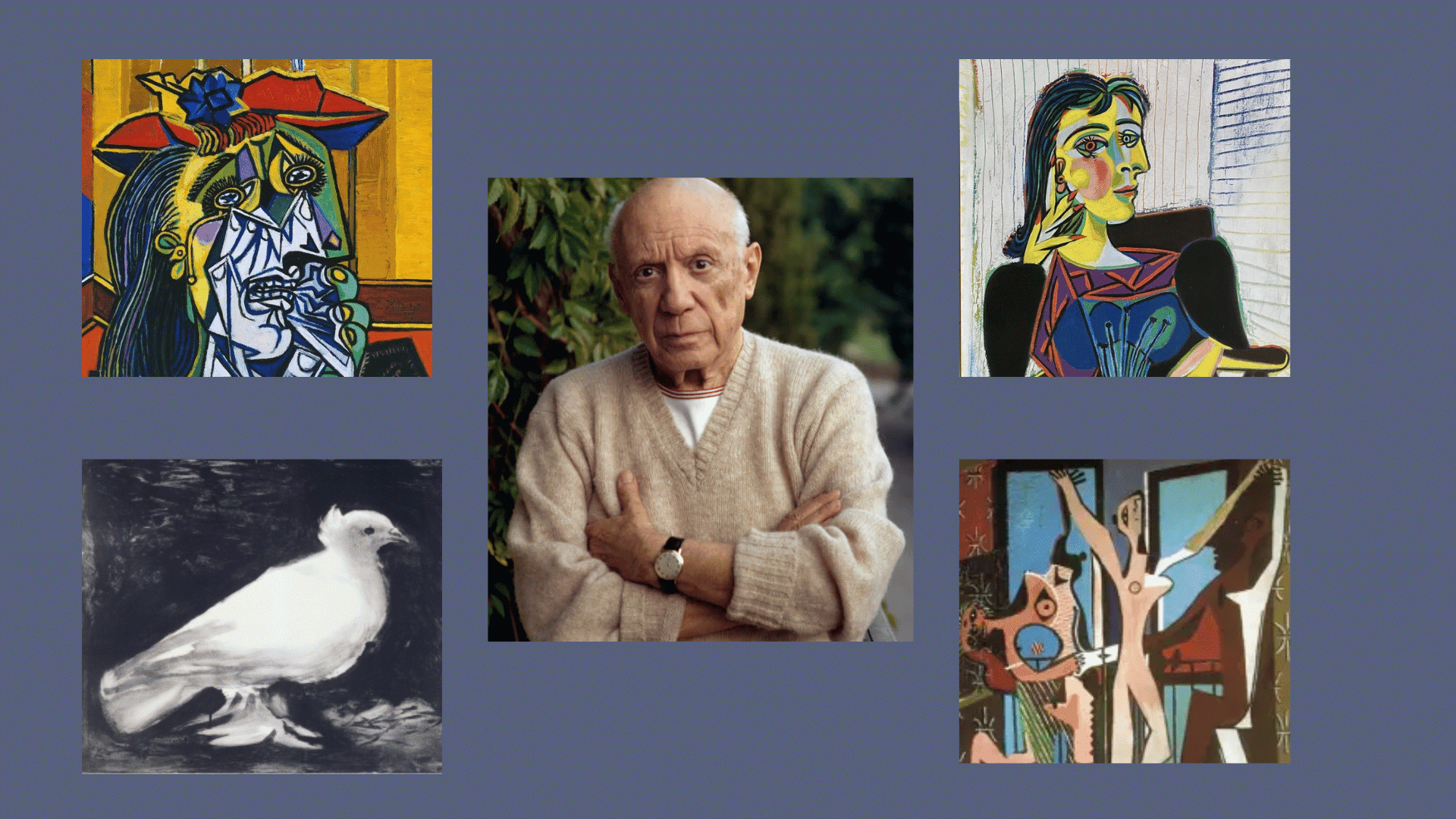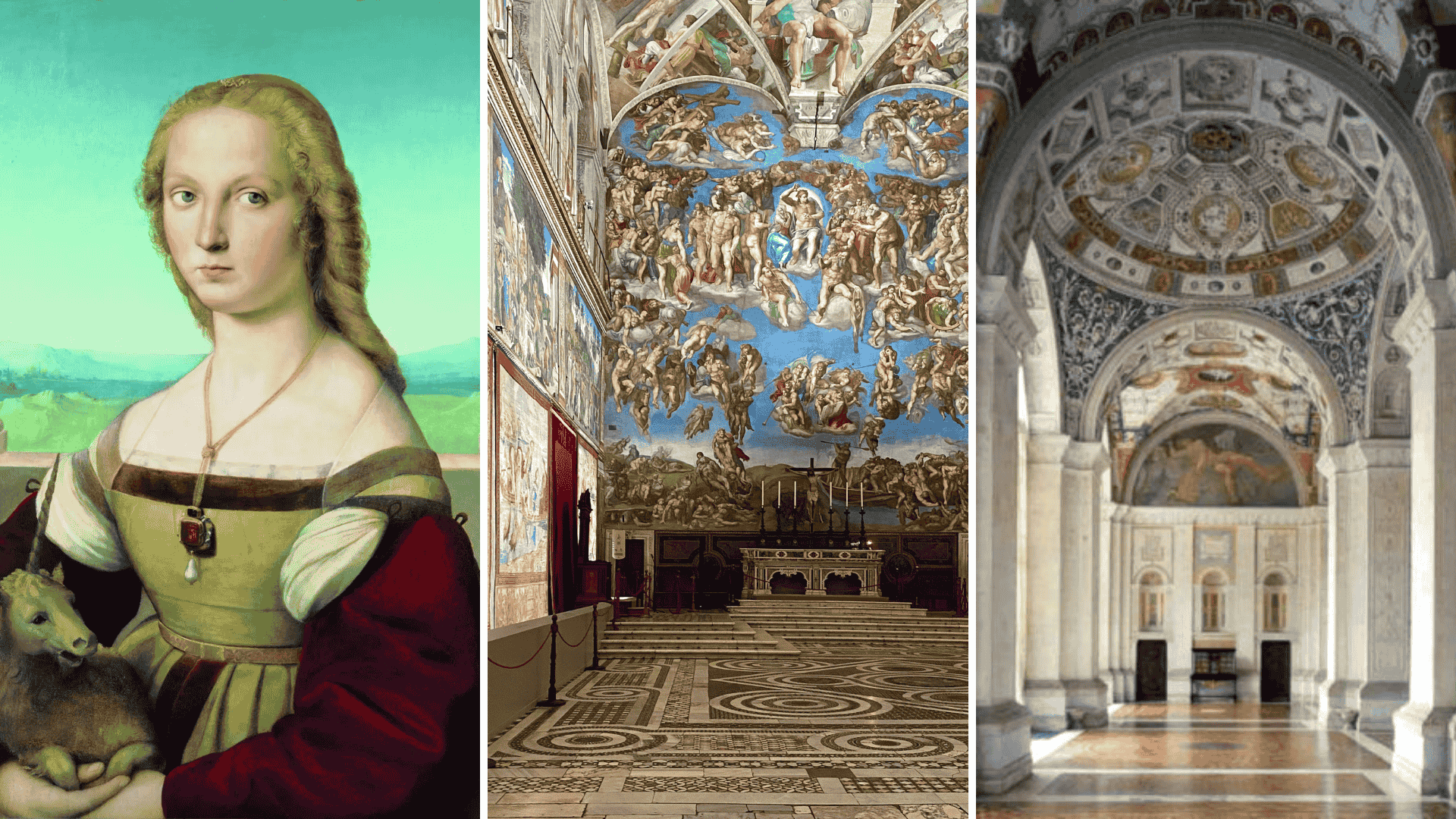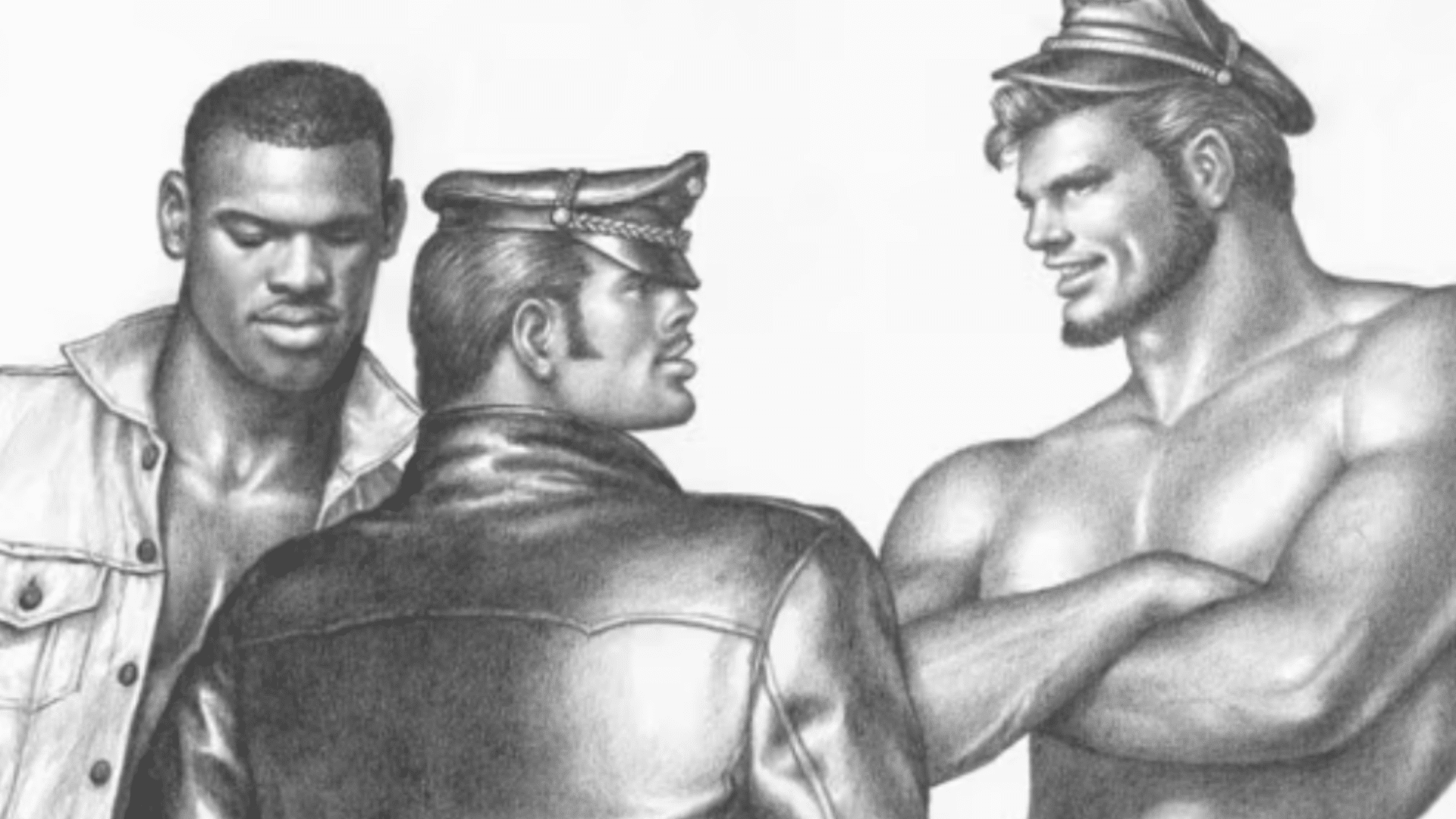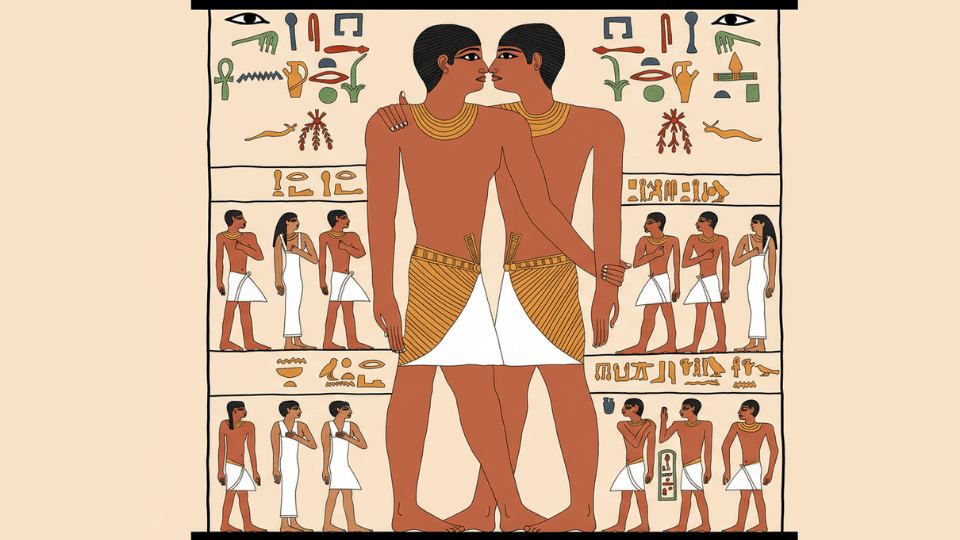Pop Art emerged in the 1950s, shaking up the art world with its lively colors, bold lines, and larger-than-life energy.
Instead of painting grand battles or old myths, artists turned to the things people saw every day, such as soup cans, comic books, celebrities, and flashy advertisements.
By celebrating mass culture, they asked a daring question: why can’t the ordinary be art too?
Their playful images blurred the line between fine art and popular media, sparking debates that continue to this day.
From fashion to digital design, Pop’s influence is everywhere. Jump in, you’ll never look at pop culture the same way again!
Disclaimer: This content may contain graphic or sensitive images that some viewers could find it uncomfortable. Viewer discretion is advised.
What Is Pop Art and Why Does It Still Matter?
Pop Art began in the 1950s in the UK and the United States as a reaction against traditional fine art.
Instead of focusing solely on “high culture,” artists like Andy Warhol and Roy Lichtenstein drew inspiration from images in advertising, comic books, and everyday products.
Bright colors, bold lines, and repeated patterns made their work stand out and connected with people who were surrounded by mass media and consumer goods.
Pop Art remains relevant because it changed our view of art, showing everyday objects and pop culture as meaningful as classic paintings.
You can see famous pop art masterpeices at the Tate Modern in London, The Museum of Modern Art (MoMA) in New York, and The Andy Warhol Museum in Pittsburgh.
Groundbreakers & Proto-Pop of Famous Pop Art
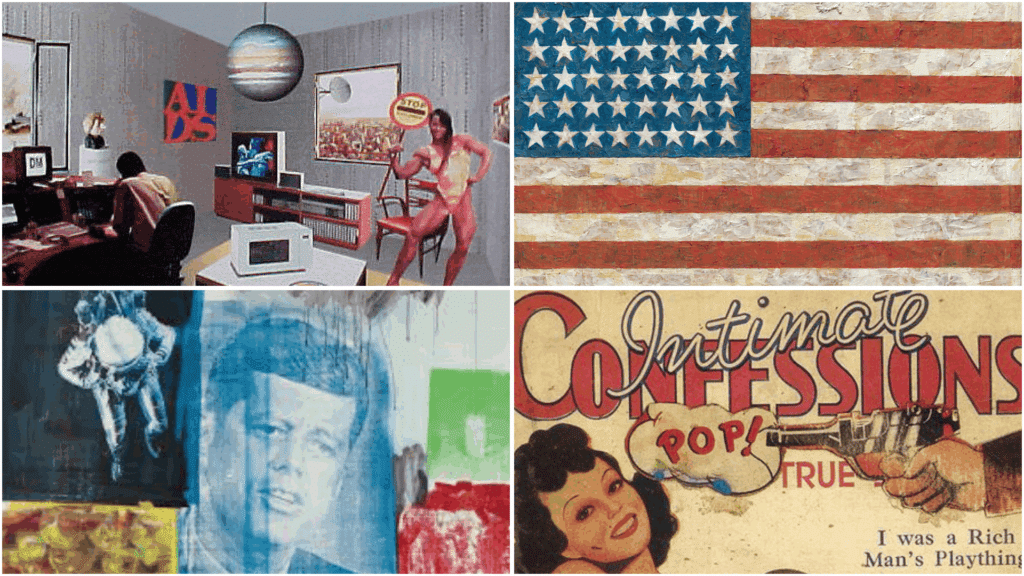
In the late 1940s and 1950s, British and U.S. artists experimented with everyday images, advertising, and popular culture.
Their bold works blurred the boundaries between fine art and mass media, paving the way for Pop Art’s colorful and playful explosion.
1. Richard Hamilton: Just What Is It That Makes Today’s Homes So Different, So Appealing? (1956)
This iconic collage combines magazine ads, furniture, and celebrities in a single living room scene. Hamilton changed consumer goods and pop culture into high art, demonstrating how mass-produced images have shaped modern life and style.
2. Eduardo Paolozzi: I Was a Rich Man’s Plaything (1947)
Paolozzi cut and pasted images of Coca-Cola, pin-up girls, and wartime magazines. The playful composition helped invent Pop Art’s language, turning everyday advertisements into something thought-provoking and artistic.
3. Peter Blake: On the Balcony (1955–57)
Blake combined painted figures with magazine clippings of celebrities, fashion, and news. By blending art history with pop culture, he challenged societal values and blurred the distinction between high culture and popular entertainment.
4. Jasper Johns: Flag (1954–55)
Using encaustic paint and newspaper clippings, Johns recreated the American flag as both object and artwork. His piece urged viewers to reconsider the symbols they see daily, questioning whether the flag is just an image, an object, or something more profound.
5. Robert Rauschenberg: Retroactive I (1964)
Rauschenberg layered photos of John F. Kennedy with everyday images, such as astronauts and appliances. His work captured the energy and media saturation of 1960s America, blending political and pop culture imagery into a single, thought-provoking canvas.
Famous Pop Art :Warhol’s Mass-Culture Icons
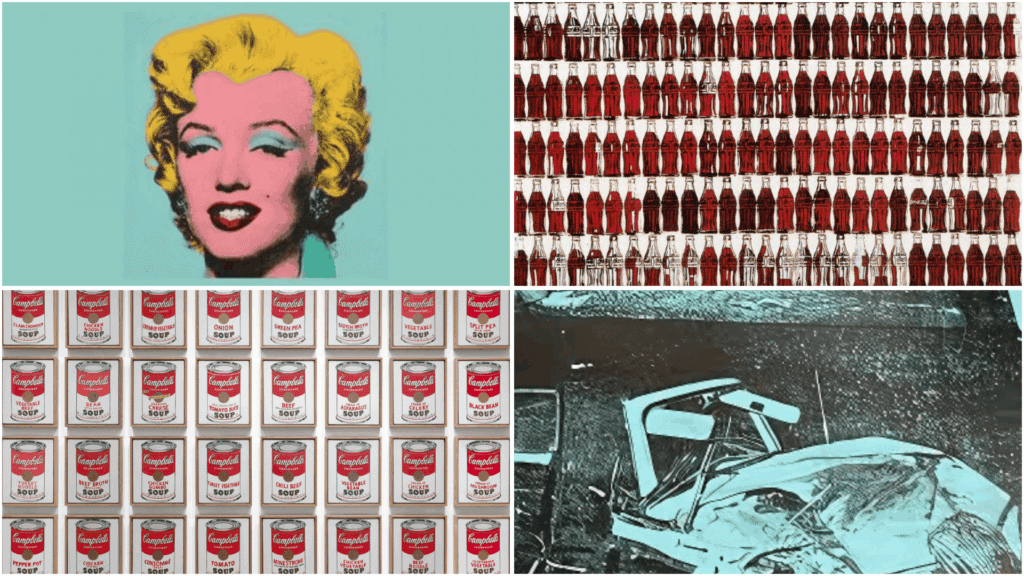
Andy Warhol used factory methods and bold images to turn soup cans, soda bottles, and famous faces into art.
By celebrating consumer goods and celebrities, he redefined the concept of “high art.” His works influence how we view fame, advertising, and culture today.
6. Andy Warhol: Campbell’s Soup Cans (1962)
Warhol painted 32 canvases of soup cans, each showing a different flavor. By altering a simple grocery product into art, he questioned what constitutes valuable and blurred the line between consumer items and fine art.
7. Andy Warhol: Marilyn Diptych (1962)
This artwork repeats Marilyn Monroe’s image in bright and fading colors. It celebrates her star power while also hinting at the sadness and emptiness that often accompany fame, capturing the tension between celebrity and human vulnerability.
8. Andy Warhol: Coca-Cola (3) (1962)
Warhol painted the familiar Coke bottle to show how mass-produced goods unite everyone. He believed that no matter how rich or poor, all people could enjoy the same Coke, making it a symbol of equality in consumer culture.
9. Andy Warhol: Green Car Crash (Green Burning Car I) (1963)
This shocking silkscreen repeats images of a fatal car accident. Warhol used media photos of tragedy to show how people consume violence in the same way they consume entertainment, forcing viewers to face their own curiosity.
10. Andy Warhol: Eight Elvises (1963)
Depicting Elvis Presley as a cowboy, repeated eight times, this painting shows how mass media multiplies celebrity images until they seem unreal. It turns a beloved star into both an icon and a product of popular culture.
11. Andy Warhol: Shot Sage Blue Marilyn (1964)
A dazzling portrait of Marilyn Monroe, painted in bright turquoise and pink. It became legendary when it sold for $195 million in 2022, proving Warhol’s bold vision of pop celebrity remains powerful and relevant today.
Famous Pop Art: Lichtenstein’s Comic-Book Language
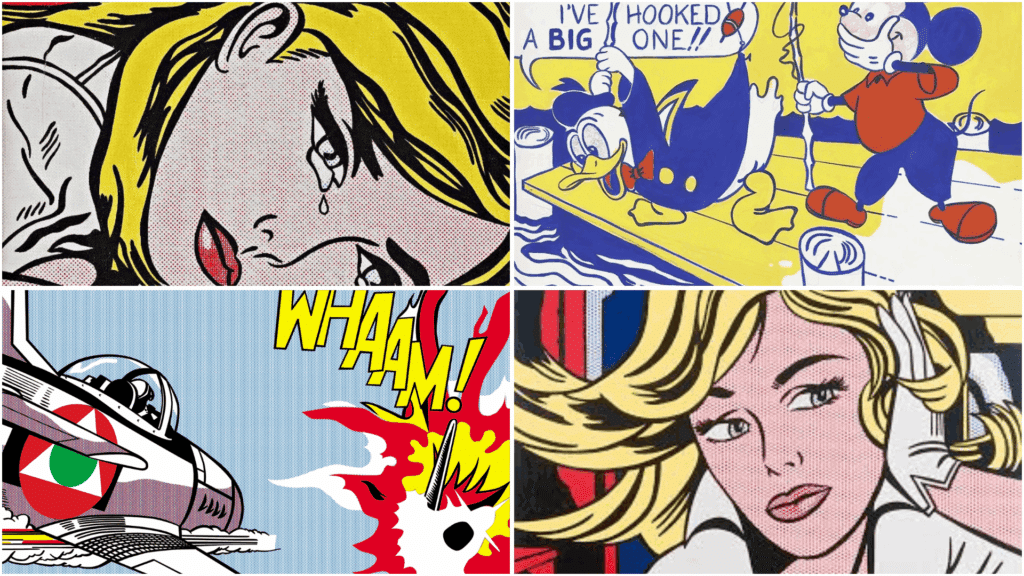
Roy Lichtenstein turned comic strips into bold, colorful canvases, using striking outlines and Ben-Day dots to shape Pop Art’s iconic style.
12. Roy Lichtenstein: Look Mickey (1961)
This playful painting shows Donald Duck and Mickey Mouse in a comic scene. It’s one of Lichtenstein’s first Pop works, setting the stage for his bold style with speech bubbles, thick outlines, and mechanical-looking dots.
13. Roy Lichtenstein: Drowning Girl (1963)
A woman cries in comic-book style, saying she’d “rather sink than call Brad.” The painting uses dramatic emotion and mechanical dots, turning a pulp romance image into fine art while poking fun at melodrama.
14. Roy Lichtenstein: Whaam! (1963)
Inspired by a war comic, this diptych shows a jet firing a missile that explodes in a fiery blast. The onomatopoeic “WHAAM!” captures the loud, exaggerated energy of pop culture and mass media imagery.
15. Roy Lichtenstein: Hopeless (1963)
A close-up of a tearful woman dominates the canvas. Lichtenstein used bright colors and bold lines to amplify emotion, changing a simple comic panel into a dramatic statement about love and despair.
16. Roy Lichtenstein: M-Maybe (1965)
This work features a glamorous woman waiting for a man, her thought bubble reading “M-Maybe he became ill…” It highlights themes of longing and uncertainty while showing how comics reflect personal and cultural anxieties.
17. Roy Lichtenstein: As I Opened Fire (1964)
A three-panel painting of fighter planes and explosions, it mimics the layouts of comic books. The cropping and bold graphics immerse viewers in action, showing how Pop Art reimagined mass-media drama as monumental gallery art.
Famous Pop Art : Monumental Scale & Media Collage
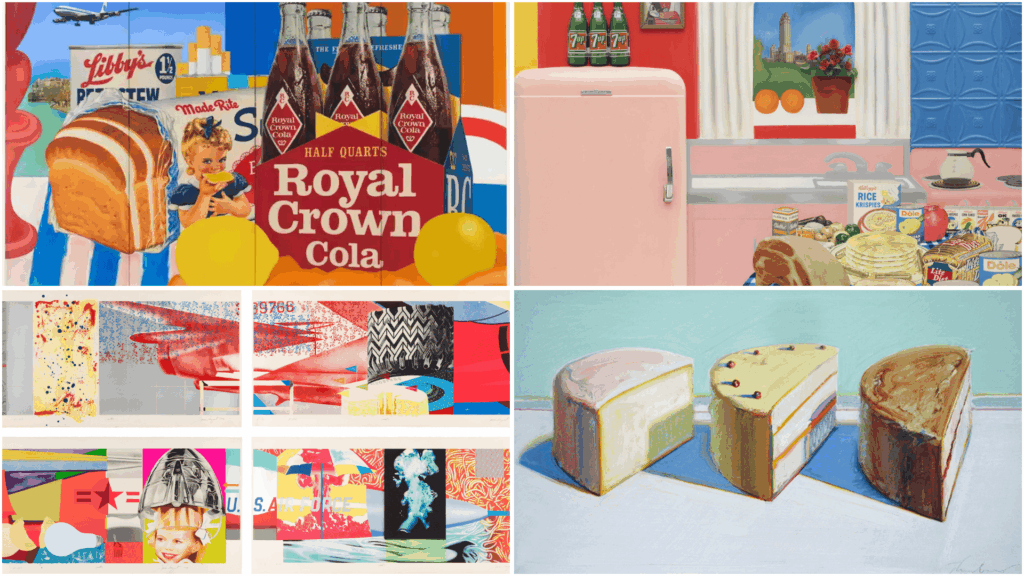
As famous pop art grew, artists enlarged comics, ads, and everyday images to billboard size, making them eye-catching spectacles. By magnifying the ordinary, they made viewers reconsider the influence of mass culture.
18. James Rosenquist: F-111 (1964–65), MoMA
Stretching over 80 feet, this mural mixes a fighter jet with ads for food, lightbulbs, and consumer goods. Rosenquist showed how war, technology, and consumer culture are tangled together on a massive, eye-catching scale.
19. Tom Wesselmann: Great American Nude #57 (1965)
This bold canvas shows a stylized nude with lively pop imagery. Wesselmann used advertising colors and simplified forms to question beauty standards. Recent exhibitions, like the Financial Times spotlight, renewed interest in this provocative series.
20. Tom Wesselmann: Still Life #35 (1963)
Wesselmann enlarged everyday objects like cigarettes, food, and appliances. By blowing up these items, he turned simple consumer goods into monumental symbols of modern life, making the ordinary appear glamorous and surreal.
21. David Hockney: A Bigger Splash (1967)
This bright poolside scene shows a splash frozen in time. Hockney magnified a fleeting moment into a huge, calm canvas, highlighting California’s culture of leisure, luxury, and the cinematic dream of mid-century America.
22. Wayne Thiebaud: Cakes (1963)
Rows of brightly frosted cakes sit like glowing sculptures. Thiebaud used thick paint and lively colors, making desserts look monumental. His work turns simple treats into objects of beauty, mixing sweetness with commentary on consumer desire.
Famous Pop Art: Sculptural Pop & Words You Can Touch
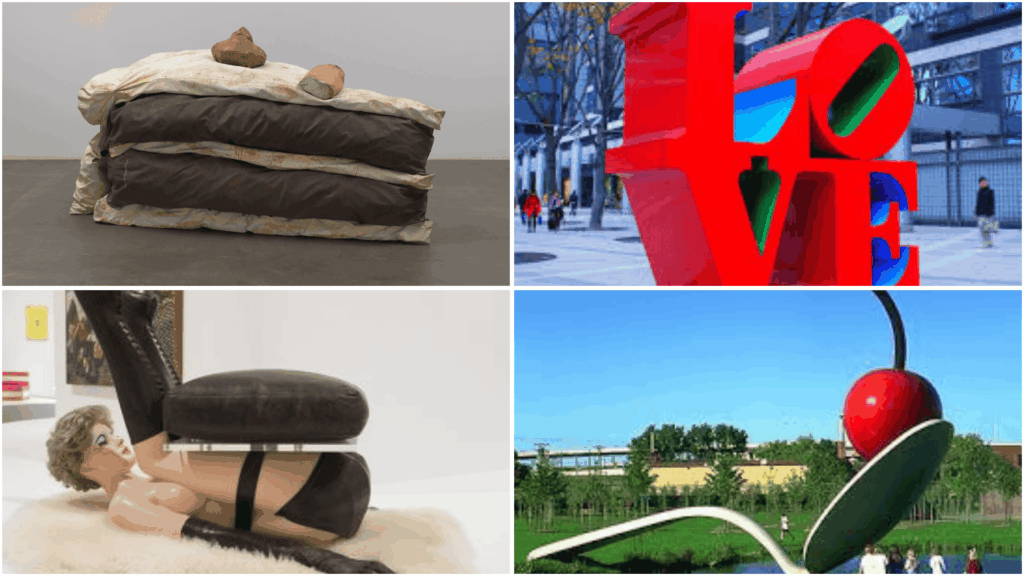
Pop Art expanded into three dimensions with oversized objects, playful monuments, and furniture that blend art with daily life.
From cakes to giant spoons, these sculptures turned ordinary items into bold pieces that made viewers laugh, question, and reflect on culture.
23. Claes Oldenburg: Floor Cake (1962)
A massive canvas-and-foam slice of cake rests on the floor. Oldenburg used scale and humor to change a simple dessert into a work of art, making the ordinary feel extraordinary.
24. Claes Oldenburg & Coosje van Bruggen: Spoonbridge and Cherry (1985–88)
This playful outdoor sculpture in Minneapolis shows a giant spoon with a huge cherry perched on top. It turns a basic kitchen object into a whimsical public landmark, blending Pop Art with monumental scale.
25. Robert Indiana: LOVE (1966)
Bold red and blue block letters spell “LOVE,” with a tilted “O” that became instantly iconic. Indiana’s work transforms a simple word into a sculptural symbol of affection, peace, and popular culture worldwide.
26. Marisol: The Party (1965–66)
Marisol’s life-size wooden figures mimic fashionable party guests. Combining painting and sculpture, she highlighted the artificial smiles and social masks of consumer culture while maintaining a playful Pop edge.
27. Allen Jones: Chair (1969)
A female figure is shaped into a chair, blending art, furniture, and provocation. The work sparked debate about objectification, showing how Pop sculpture could be both bold and controversial.
Famous Pop Art: Global & Feminist Voices in Pop
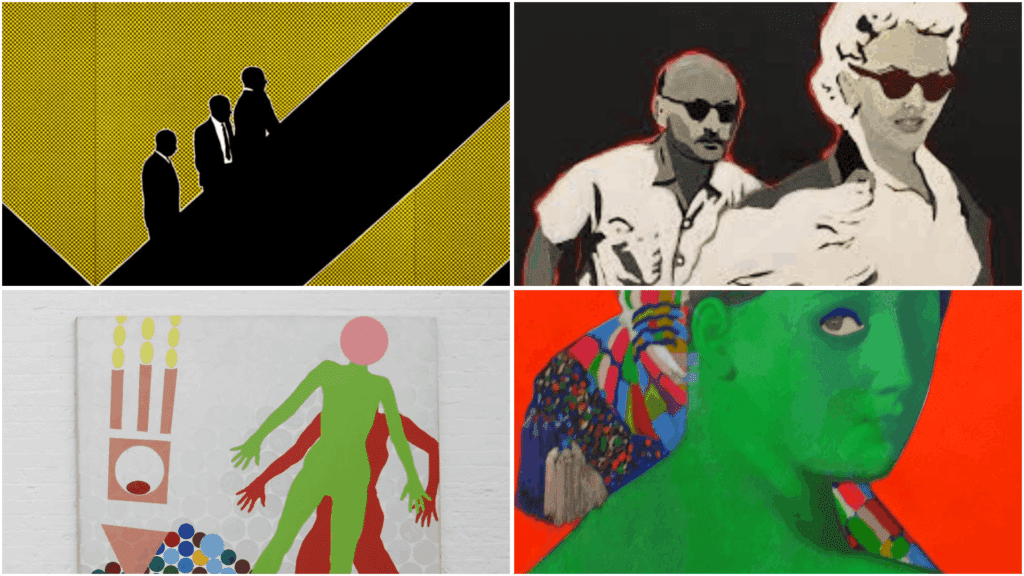
Pop Art wasn’t limited to New York or Los Angeles. Women artists and international creators reimagined the style, adding new perspectives on gender, politics, and media culture.
Their works expanded the movement’s language, showing that Pop could be playful, critical, and deeply connected to global conversations.
28. Pauline Boty: The Only Blonde in the World (1963)
Boty, Britain’s only female Pop artist, painted Marilyn Monroe as a bold, fragmented icon. She highlighted how women in media were glamorized yet trapped, pushing Pop toward feminist critique.
29. Kiki Kogelnik: Fly Me to the Moon (1963)
Kogelnik merged space-race imagery with playful, colorful forms. Her work celebrated futuristic dreams while commenting on Cold War technology and how science fiction shaped popular imagination.
30. Idelle Weber: Munchkins I (1964)
Weber’s silhouetted office workers appear identical and anonymous. By showing men in suits as faceless figures, she flipped Pop Art’s focus, satirizing conformity and corporate culture.
31. Rosalyn Drexler: Marilyn Pursued by Death (1963)
Drexler combined painted figures with magazine clippings, portraying Marilyn Monroe chased by a looming male figure. Her work critiques sexism, violence, and the darker side of celebrity culture.
32. Martial Raysse: Made in Japan: La Grande Odalisque (1964)
Raysse reimagined Ingres’s famous painting with neon colors and modern props. Mixing high art with consumer culture, he showed how traditional beauty ideals collided with mass media advertising.
33. Equipo Crónica: Guernica 69 (1969)
This Spanish artist collective reinterpreted Picasso’s Guernica using Pop colors and comic style. Their work connected Pop to politics, criticizing both war and the commercialization of iconic art.
34. Mario Schifano: Esso (1966)
Schifano enlarged the Esso gas logo into a striking artwork. By spotlighting a corporate brand, he joined the European “Nouveaux Réalistes” in questioning consumer culture and the powerful reach of global advertising.
Famous Pop Art: Brands, Pin-Ups & Mass Media Remix
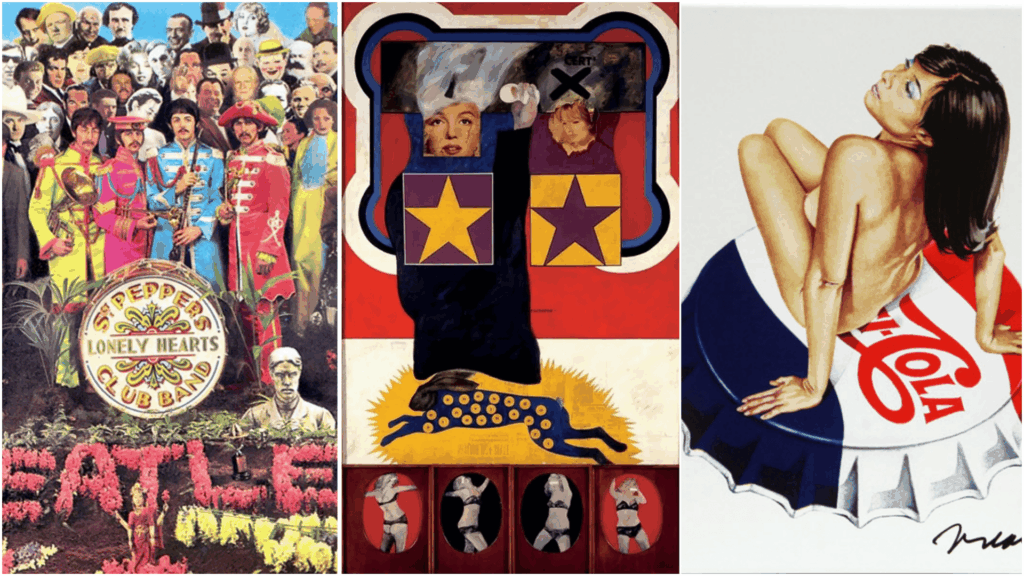
Pop Art loved to mix consumer logos with famous faces, turning ads and celebrity culture into bold, playful images.
These works embodied glamour, humor, and irony, showcasing how mass media and marketing influenced modern identity while poking fun at our obsession with fame and consumer products.
35. Mel Ramos: Lola Cola (1965)
Ramos paired a pin-up model with a giant Coca-Cola bottle. The painting playfully mixes advertising and sexuality, questioning how brands use glamour to sell everyday goods.
36. Peter Phillips: For Men Only: Starring MM and BB (1961)
This collage combines Marilyn Monroe and Brigitte Bardot with flashy graphics. Phillips created a billboard-like artwork that mirrors how magazines and ads package women as symbols of desire.
37. Peter Blake & Jann Haworth: Sgt. Pepper’s Lonely Hearts Club Band (1967)
The famous Beatles album cover is a colorful collage of celebrities, historical figures, and pop icons. It captured the spirit of the 1960s and showed how Pop Art could blend music, media, and mass culture into a single striking image.
How to Connect with Famous Pop Art in Everyday Life?
Pop Art is still alive and everywhere, from museums to your Instagram feed. You can enjoy it in person, online, or even at home. Here are some fun ways to get started with the movement today.
- Visit top U.S. museums: See Pop masterpieces at MoMA in New York, the Whitney Museum of American Art, and the Art Institute of Chicago.
- Explore online collections: Browse MoMA, Tate Modern, and Google Arts & Culture for virtual tours and high-res images.
- Collect books: Start with art books featuring Warhol, Lichtenstein, or Boty to build your Pop library.
- Create a home gallery: Hang posters or prints of iconic works for everyday inspiration.
- Notice modern influence: Pop’s bold colors and graphics live on in memes, street art, and digital design today.
Pop Art isn’t just history, it shapes how we see culture today, sparking creativity, conversations, and connections to a lively world of ideas.
Conclusion
Learning about famous pop art paintings is like stepping into a world filled with bright colors, playful images, and everyday objects turned into something new.
From Andy Warhol’s soup cans to Roy Lichtenstein’s comic-inspired works, these bold creations changed how people see art and culture.
They remind us that beauty can be found in the ordinary and that creativity has no limits.
If you’re a student, a parent, or just someone who loves art, taking time to enjoy these pieces can spark fresh ideas and bring a smile to your day.
Start your famous pop art venture now and add some color to your world!

